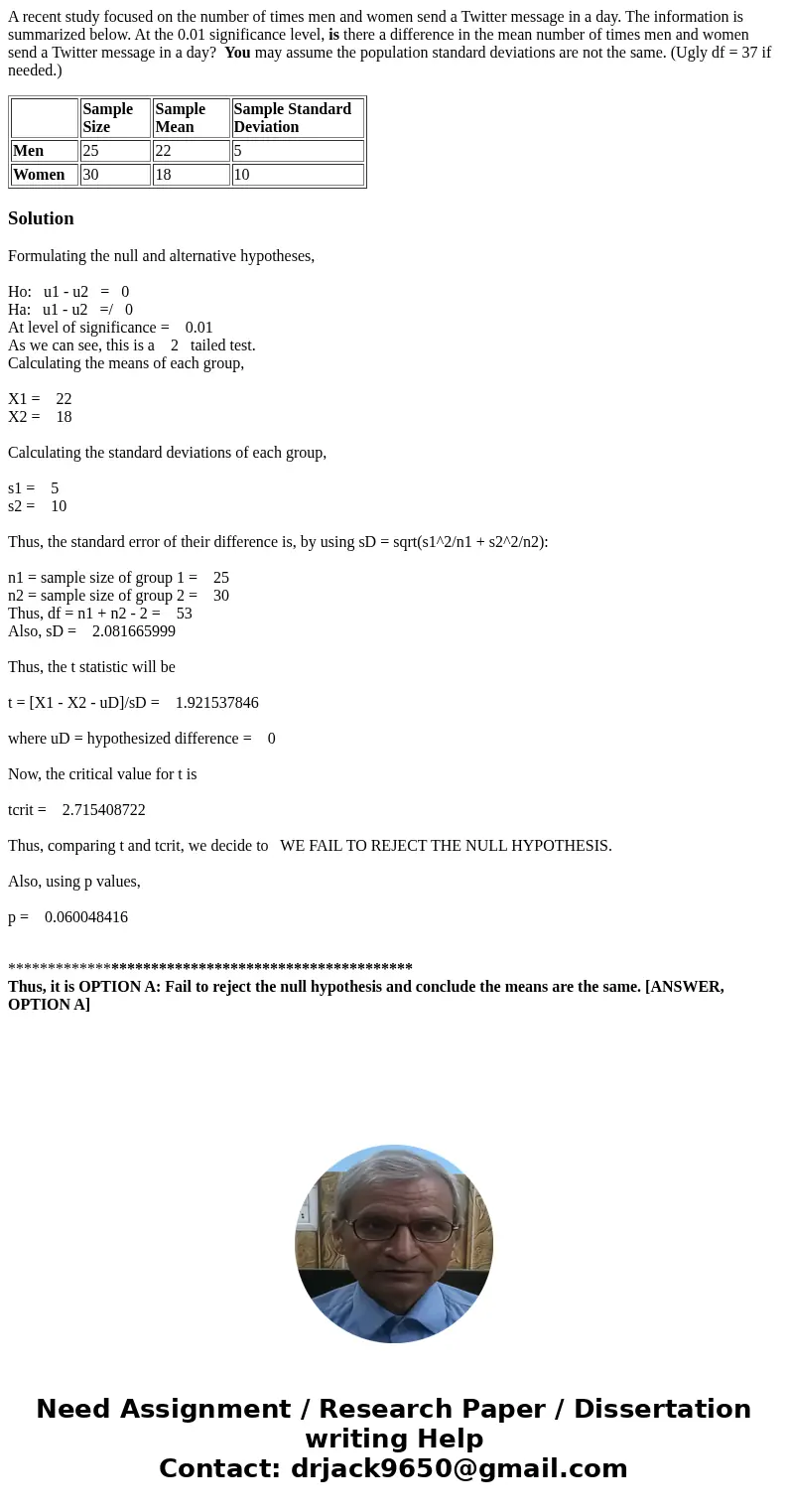A recent study focused on the number of times men and women
A recent study focused on the number of times men and women send a Twitter message in a day. The information is summarized below. At the 0.01 significance level, is there a difference in the mean number of times men and women send a Twitter message in a day? You may assume the population standard deviations are not the same. (Ugly df = 37 if needed.)
| Sample Size | Sample Mean | Sample Standard Deviation | |
| Men | 25 | 22 | 5 |
| Women | 30 | 18 | 10 |
Solution
Formulating the null and alternative hypotheses,
Ho: u1 - u2 = 0
Ha: u1 - u2 =/ 0
At level of significance = 0.01
As we can see, this is a 2 tailed test.
Calculating the means of each group,
X1 = 22
X2 = 18
Calculating the standard deviations of each group,
s1 = 5
s2 = 10
Thus, the standard error of their difference is, by using sD = sqrt(s1^2/n1 + s2^2/n2):
n1 = sample size of group 1 = 25
n2 = sample size of group 2 = 30
Thus, df = n1 + n2 - 2 = 53
Also, sD = 2.081665999
Thus, the t statistic will be
t = [X1 - X2 - uD]/sD = 1.921537846
where uD = hypothesized difference = 0
Now, the critical value for t is
tcrit = 2.715408722
Thus, comparing t and tcrit, we decide to WE FAIL TO REJECT THE NULL HYPOTHESIS.
Also, using p values,
p = 0.060048416
***************************************************
Thus, it is OPTION A: Fail to reject the null hypothesis and conclude the means are the same. [ANSWER, OPTION A]

 Homework Sourse
Homework Sourse